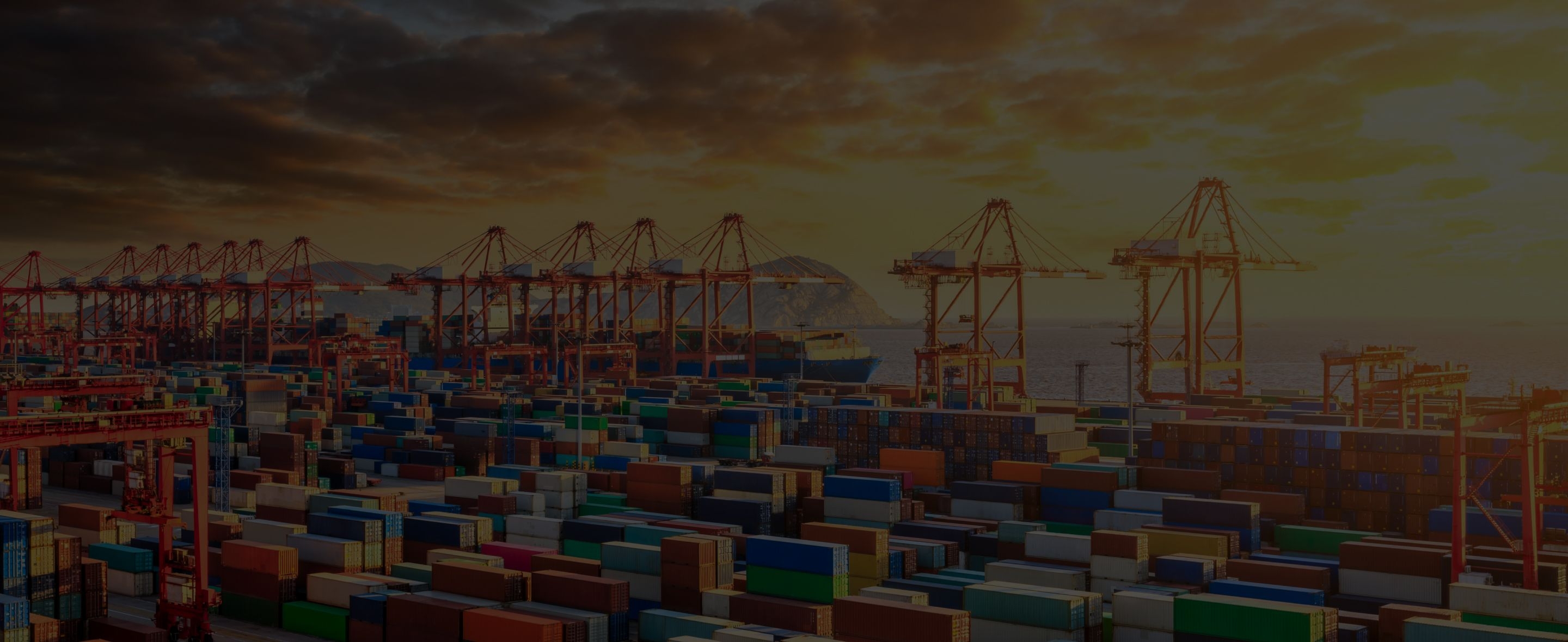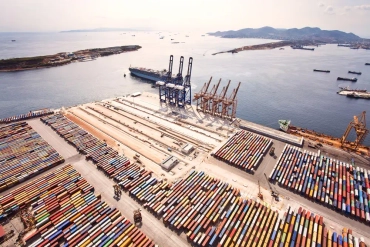
Largest east coast ports in the US



Alert: Please be aware of significant disruptions impacting shipping routes to and from Baltimore due to the Key Bridge collapse. Read more about the impact of inbound and outbound shipments to Baltimore on our dedicated page and check out our expert's recommendations here.
East Coast ports making gains
The ports of Los Angeles and Long Beach on the US west coast may reign top as the largest and busiest ports in the country, but ports along the east coast have slowly been making gains.
According to the Pacific Merchant Shipping Association (PMSA) West Coast Trade Report released last year, gulf and east coast ports have been catching up with their western counterparts.
In terms of metric tons, the US West Coast received more than double the amount of cargo from East Asia compared to the East Coast (54.2 million MT vs 21.8 million MT) in 2017. But the East Coast recorded a 2.5 million MT increase from the previous year — 1 million MT more than the corresponding increase on the West Coast.
“There was a time when East Coast ports handled the majority of the nation’s container trade. The emergence of China as a force in global trade changed that. Now with the opening of a new set of locks at the Panama Canal coupled with a shrinking differential in transpacific container rates between the two coasts, the West Coast’s dominance is being steadily imperiled.”
– PMSA West Coast Trade Report
Data from the report also show massive gains by East Coast ports — an 8.6% increase in containerized shipments from East Asia in 2017. Of them, the port of Charleston and Jacksonville recorded the largest gains of 18.9% and 24.3% respectively.
Here’s a look at how East Coast ports have been growing over West Coast ports over the past few years.
Movement along the east coast
East Coast ports have been undertaking more and more investments in recent years.
With imports and exports on the rise in and out of these ports, it’s only a matter of time before larger and deeper berths are necessary to accommodate the changes and remain competitive.
Upgrades to cranes to handle the influx of containers, the deepening of berths and expansion of rail terminals are just signs of the increasing demand for imported goods by US consumers.
Savannah Port, for example, now handles 11,000 containers a day – three times what it was handling just 15 years ago.
And investments are slowly but surely starting to pay off. Drewry’s 2017 data showed that inbound goods from Asia to the east coast increased 8% compared to the 5% registered along the west coast for the first half of the year.
“I think there is a healthy competition going on between the East Coast ports. The close proximity and shared inland markets keep everybody on their toes. They have all seen growth and realized there is even more potential.”
– Klaus Lysdal, VP of Operations, iContainers
The China factor
Though separated by more than an ocean and continent away, China represents huge business opportunities and growth for most, if not all, of these ports on the East Coast.
It’s estimated that the sea journey from the Asian giant to the US increases wholesale costs by as little as just three per cent.
And East Coast ports sure know how to leverage this; it takes just 29 days for Chinese goods to travel from Shanghai to Atlanta through the Port of Charleston.
It’s quid pro quo for Charleston, which ships roughly $2 billion worth of vehicles to China annually.
In fact, more than two-thirds of goods transiting through South Carolina ports involve trade with China.
“China is where the growth is. I don’t think the world can function without free trade. The global supply chain is based on trade and I don’t think you can walk that back.”
**– Jim Newsome, South Carolina Ports Authority Chief Executive
**
The game-changing Panama Canal
Although it’s traditionally been faster to import goods originating from Asia to the US via West Coast ports, trends and figures over the past decade show that this is slowly balancing out.
And the Panama Canal expansion in 2016 could just prove to be a game-changer.
The canal serves 29 major liner services on the USEC to Asia route. Of these, 15 are Neopanamax liner services.
By allowing a transit point for the new generation of mega-ships, land-based transportation costs are reduced and goods going between the US and Asia now have a new alternative.
In its 2018 fiscal year, one of three vessels going through the Panama Canal was ploughing the USEC-Asia route.
In this same period of time, US, China, Mexico, Chile, and Japan were the largest users of the canal, and 62.8% of the cargo passing through the canal was going either to or from the US.
![]()
Image credit: Maritime Executive
East Coast ports such as New York, Baltimore, Savannah, and Charleston have been investing heavily in expansion projects to adapt and remain competitive.
Increased dredging to expand berths and the purchase and heightening of new cranes are just some measures USEC ports have taken to allow them to handle the larger ships and volumes coming through the Panama Canal.
As a result, several east coast ports hit year-on-year growth records in total tonnage, an achievement that’s being directly attributed to the expansion.
All this intense competition is good news for business owners going through the east coast, who can expect to continue seeing relatively healthy prices.
_“East Coast ports are preparing for larger vessels and improving their infrastructures to try to utilize their strengths and meet the anticipated demands of the future.
And as carriers introduce even larger vessels to the Asia-Europe trade, they are starting to switch out these vessels to the Asia-US trade. This helps push prices down per unit, and I don’t think we will see this trend slowing any time soon.”_
– Klaus Lysdal
Largest east coast ports in the US
The major union strike a few years ago in California forced many BCOs to look at other options of reaching the US mainland instead of going through the West Coast.
Some experts say that, in a way, that was a perfect predecessor to the Panama Canal expansion and the opportunities that are now presented for the East Coast ports.
And the East Coast ports are definitely taking advantage of the change in tide, with massive expansion efforts and investments going up and down the coast.
Here’s a look at the largest east coast ports in the US and what they’re doing to accommodate the rise in demand and opportunities.
1. Ports of New York & New Jersey
It’s estimated that the ports of New York/New Jersey account for over one-third of the North Atlantic trade.
To tackle increasing competition from other East Coast ports and be able to handle larger vessels coming from the newly expanded Panama Canal, the port has deepened its harbor to 50 feet.
It has also recently completed the raising of the Bayonne Bridge that connects New Jersey to New York’s Staten Island and can now handle ships up to 18,000TEUs.
Annual TEUs: 6,251,953
2. Port of Savannah
The Port of Savannah is also undergoing upgrades of its own.
Its harbor expansion project (SHEP) will be completed in 2020, after which it will be able to handle 14,000 TEU vessels.
Its intermodal system is also being improved to gain better access and increase its market share of the Midwest to make the port a more cost-efficient and viable option.
Following the completion of these projects, port authorities estimate that US businesses can save up to 40% in transportation costs by going through the port.
Annual TEUs: 3,644,521
3. Port of Virginia
The Port of Virginia is undergoing $670 million worth of projects to expand port capacity by 40% by 2020.
One of which includes expanding its harbor five feet deeper. Following the project’s completion, it will be the deepest port on the East Coast.
Intermodal investments have also begun - particularly the expansion of the port’s rail and motor transportation.
“I think we are seeing that the ocean carriers and cargo owners are diversifying their logistics chains and using the East Coast. When you have 50 feet of water up and down the East Coast, we think it’s going to be a good thing for cargo coming here.”
– Joe Harris, Virginia Port Authority spokesman
Annual TEUs: 2,655,706
4. Port of Charleston
Container traffic at the Port of Charleston has increased by 8% per year ever since the end of the recession period in 2009. This is in large thanks to a change in trade flows to/from Asia instead of Europe.
The harbor is also currently being deepened to accommodate 18,000TEU ships – up from the current 14,000TEU vessels it’s able to handle.
Annual TEUs: 1,996,282
Related Articles


